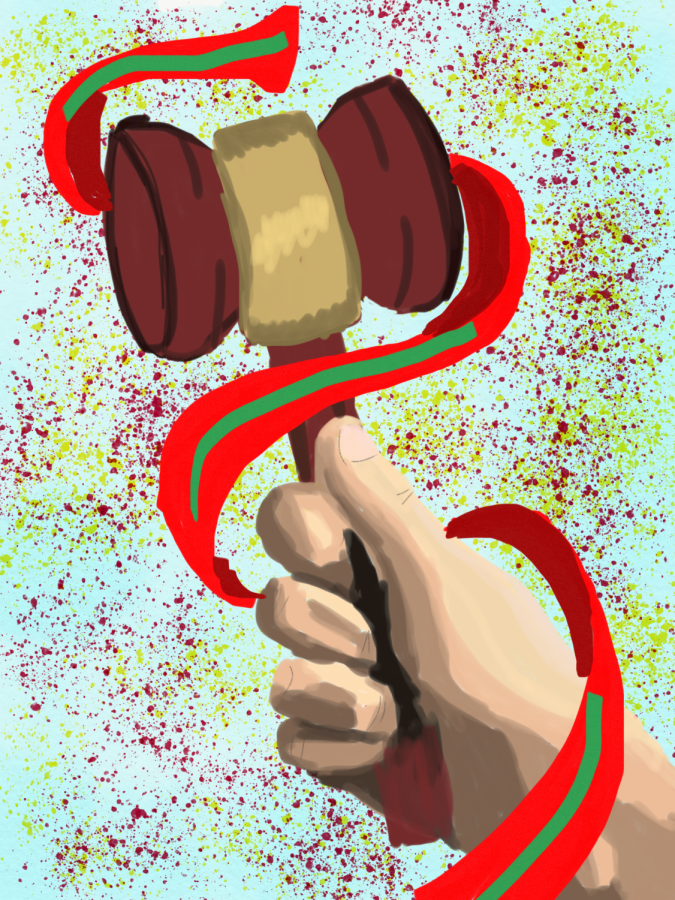Christmas and The Court
How the Supreme Court defended religious liberty – and consequently removed God.
The Supreme Court interprets and defends the Constitution, but its defense of the First Amendment changes how public displays decorate for Christmas.
I recently went to go see Winter Wonderland in Tilles Park, a tradition for my family and I. With over 1.1 million lights, it’s a beautiful sight to see, with the Christmas lights seemingly everywhere. There are lots of secular images of Santa, reindeer, pets, animals, ice skaters – but nowhere is there an image of Jesus, the reason why Christians celebrate Christmas.
This got me thinking, why is that? After looking at my notes for my Government class, and a little bit of research, I’ve discovered why Jesus seems to be absent from Christmas nowadays. It’s all due to this little thing called the Supreme Court of the United States.
It’s the job of the Supreme Court (or SCOTUS) to interpret the laws set forth in the Constitution. However, there are amendments to the Constitution, which adds laws and rights that all US citizens have. The first ten amendments to the Constitution are called the Bill of Rights. The first given right is about protecting people’s freedom, whether that be the press, petitioning, speech, assembly – or religious liberty.
Part of this clause about freedom of religion in the First Amendment prevents the government from restricting or prohibiting the free exercise of religion, but it also inhibits the government to create, endorse, or benefit one religion over another. This is often referred to as the Establishment Clause. Often it’s at this part of a discussion about the Bill of Rights where the phrase ‘separation of church and state’ comes up, yet nowhere in the Constitution is this phrase actually mentioned. Many people believe that it is part of the First Amendment, but it is not. To clarify: an individual may have a belief or be a part of a specific religion, but the government cannot establish a state religion and force it upon others. An example of this is an individual has a right to donate to a church, but Congress cannot declare itself Catholic, donate all its money to the Catholic Church, and then make the rest of the country convert to Catholicism. That’s a direct violation of the Bill of Rights, and what the Founders intended to prevent.
In terms of Christmas and public displays, the First Amendment can restrict the types of decorations and celebrations that are sponsored by the government. Only in public areas do you have the right to claim all of the rights listed in the Bill of Rights. For example, Winter Wonderland is sponsored by St. Louis County and presented in a park. The Bill of Rights applies since a form of government is intervening, donating money, and the event is in a public setting.
In 1983, a case went to the Supreme Court about this topic. In Lynch v Donnelly, a town hall included a nativity, a Christmas tree, and Santa Claus, as well as a banner that read ‘Seasons Greetings.’ Some residents took issue with the inclusion of the nativity, arguing that it violated the First Amendment as the government was endorsing a specific religion. When this case went all the way to SCOTUS, the judges were asked to define what the First Amendment meant in regards to these decorations. The court ruled that the display had ‘legitimate secular purposes’ since it included a tree, Santa, and a banner. If they had not included these secular decorations, the display would not have been permitted.
This decision was reinforced in 1989 with the case County of Allegheny v. American Civil Liberties Union. The court concluded that a nativity inside the courthouse was a violation of the Establishment Clause due to its setting and inclusion of a banner proclaiming Christ’s birth, while the Jewish display outside was permitted due to its ‘particular physical setting.’
Since the 80’s there have been no more SCOTUS cases involving decorating for Christmas. Because of the rulings that the court made, however, most towns and cities nowadays do not include any religious references in their displays. That’s why when you go to a public display sponsored by a county or local government you will not see any explicit reference to Jesus, a nativity, or any other religion. In an age of inclusivity, it is better to play it safe than have an expensive lawsuit at your door.
The world of court cases and SCOTUS is fascinating, and the fact that a case about Christmas decorations went all the way to the Supreme Court is simply captivating. Though I personally may feel a tad disappointed about not seeing nativity scenes in public displays, the First Amendment does guarantee me a right to put one up in my front yard for all the world to see.




